Food is a basic human need. Restaurants transform this experience into an art. Informational technology builds elegant shortcuts to its fulfilment.
Small wonder, restaurant apps are getting increasingly popular with restaurateurs and diners alike. In fact, over 80% of restaurants are turning to technology, aware that their customers are just a few taps away. The entire restaurant experience – from discovery, to evaluation, to delivery and beyond – is now deep-seated in a mobile app.
If you’re, like us, enthusiastic about restaurant app development, check out our insights in this article. Use the plan to skip to a question of your interest.
- The restaurant app landscape
- Why do restaurant apps matter
- How to design a restaurant app
- How to make a restaurant app: feature list
- A restaurant-finder app like Zomato and Yelp
- A dinner table reservation app like Waitlist Me and Resy
- An on-table ordering and payment app like FlipDish
- An online order and delivery app like Postmates and DoorDash
- A home restaurant app for adventurous eaters
- What APIs to integrate in a restaurant app
- What’s the cost of a restaurant app development
The restaurant app landscape
Just a few decades ago, at the heart of restaurant operations, was a shiny cash register. Next, came restaurant POS systems to cut costs, optimize management, and bring customer service in focus. Websites and social media accounts brought the craved connectivity. Before long, mobile apps came popping up like mushrooms to flood the smartphone space:
- Restaurant search-and-discovery apps help find eateries in any area. Apps like Zomato, Yelp, and Foursquare cater for all tastes. While Feastly and Eatwith promote culinary adventure.
- Electronic reservation apps take care of table reservation, seat assignment, preferences history and more. Apps like Yelp Reservations, Waitlist Me, OpenTable, Resy, and Q Host secure seats in top restaurants, which tend to favor regulars and feel weary of newcomers.
- On-table ordering apps enable order placement electronically at a customer’s convenience. Ziosk and FlipDish are a few in this category to help diners browse food menus, place and modify orders.
- On-table payment apps like Table Safe and TabbedOut serve as digital checkbooks for security and time efficiency.
- Online ordering and delivery apps take care of branding, discovery, and delivery facilitation. Postmates, DoorDash, GrubHub and Just Eat are making on-demand delivery the biggest market in B2C.
- Inventory apps aid in monitoring food spend, tackling spreadsheets & counting (Orderly).
- Restaurant deal and discount apps like BigDish and LivingSocial target the foodies who like freebies (who doesn’t!).
- Loyalty & rewards program apps like FiveStars, LevelUp, and Belly offer points, reward systems, and sometimes pay-by-phone options for customers, as well as analytics and marketing options for restaurants.
Clearly, there are tons of opportunities for the catering business enhancement. But is restaurant application development really worth going into? Let’s find out.
Why do restaurant apps matter

If you are a restaurant owner, you know the right path to your clients’ hearts. But getting into their minds and capturing their attention is quite another story. Well, the solution is quite simple: make a restaurant app to stay in touch with your customers. No more fears…
Margins can make or break you
The thin net margin of just 6% for restaurants, compared to 10% in hotel business and 20 in the beverage industry, asks for cost efficiency and strict control of operations. POS apps keep restaurateurs in the loop wherever, whenever. Busy to call on all your multiple spots daily? Monitor and compare their performance all at once. View the reports from a cloud-based control panel ‘on the go’. Track sales, labor expenses, check averages and other metrics that matter to you.
Decision making is biased
How do you pick an eatery in an unknown area? Exactly! You need a nudge. Did you know you have a key to hungry tourists’ gut instinct? Restaurant app developers will help unlock the power of iBeacon technology to turn your passers-by into clients. Set up a 50-meter radius for your restaurant, send push notifications, and – voila! – you’ve just made up their minds. There isn’t a shortage of location-based app ideas out there.
Time is money
Ordering and payment eat up your resources. A food ordering app will guide a user through the pick-order-pay process while your staff can start fulfilling the order right away.The Taco Bell app, for one, provides all possible in-premise services including order placement, modification in the menu, and finally, in-app payment without waiting in the queue at POS desk or accountants’ desks. Restaurant ordering and payment apps are a blessing for all parties.
Loyalty is not by bread alone
Okay, your food is great. But you can set the cadence. Loyalty apps keep them coming back more often. Accruing points or getting a percentage off your every meal is an incentive, just like accruing miles and points for flying and hotel stay. Restaurant applications have proved good for developing long-term loyalty and frequent visits, with customised rewards programs, easy re-ordering, and targeted offers.
Millennials love all things tech
Ignoring millennials’ habits can backfire. When it comes to food experience, they are your saviors. They are adventurous with food, trust their friends’ opinions, prefer healthy eating, and spend more eating out. Above all, they are tech savvy and love the convenience, which translates into getting what they want at the press of a button. This alone is a good reason to build a restaurant app. Why not develop a restaurant table booking app that opens doors to new food adventures?
That’s just a handful of reasons. In fact, there are so many ways in which mobile apps can help businesses to grow.
How to design a restaurant app
Good restaurant app design and architecture pave your way to success. These basic rules will steer you clear of the deadly sins of app development – building nonsense-ware, worthless-ware, cost-ware, bloatware, and strangeware.
- Solve a critical problem. Just one. Is it last-mile delivery logistics, uneven client turnover, high cancellation rate, long wait times? If your restaurant app solves it better than others, you’ve got a killer design.
- Deliver value to all parties. Your app is a platform that needs a network effect in order to take off. So the right features are crucial. For example, reservations / ordering / payments are a defensive moat for restaurants, while reviewing and delivery are beneficial for foodies and gig seekers.
- Aim for cost-efficiency. Not all features monetize. Still, you need certain ones to create a positive synergy. Monetize with restaurant deals, drive traffic with reviews, foster instagrammability with share buttons, enhance engagement with notifications and user-generated content. Keep testing how various verticals work in your product. Look out for trends growth-wise.
- Keep it clean. Don’t mess with hungry users. Either you feed them or they’ll eat you for lunch. Simple is the new smart.
- Learn from the best. The apps that have stood the test of time can teach you a lot about user preferences. Follow their model when you develop your own app. Think how you can enhance this UX further on.
How to make a restaurant app: feature list
Restaurant app developers don’t reinvent wheels. The five restaurant app business models below have proved viable. Let’s take a closer look inside.
A restaurant-finder app like Zomato and Yelp
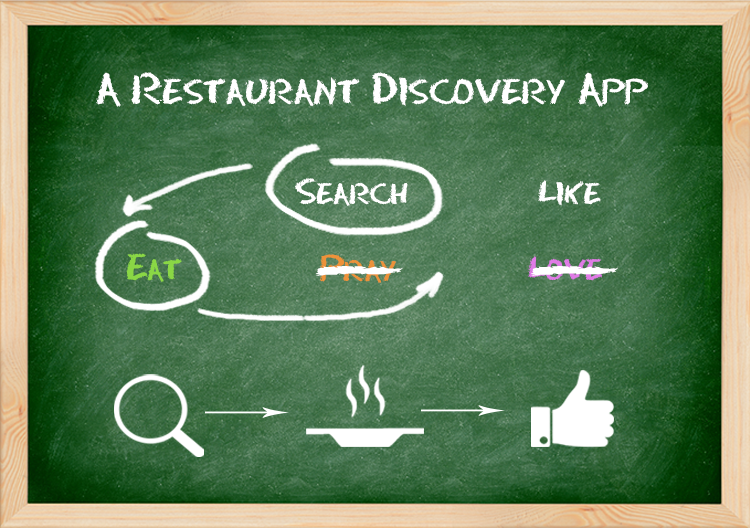
Restaurant discovery apps are extremely popular with travellers. You can pick a diner by various parameters – location, price, rating, recommendation, etc. Sort the search results in a list or map view. Zomato made the ‘search’ really simple, with a well organized database giving the most relevant results. Yelp also has a ‘nearby’ section that sorts places into categories (coffee shops, bars, etc.).
Both the apps utilize a crowdsourcing model, with users posting reviews, photos, following, liking, commenting. User generated content (UGC) fosters engagement and creates a community of trust. Users can create their personal food diaries and get promoted from a ‘foodie’, to a ‘big foodie’, ‘super foodie’, and ‘connoisseur’.
Location features are crucial. Yelp has a ‘check-in’ feature that notifies friends of your location. Another one – ‘monocle’ – is an augmented reality tool that utilizes a compass and camera to show the direction of a potential destination to your current location.
Here are the features you need to create your own restaurant discovery app:
A RESTAURANT SEARCH AND DISCOVERY APP FUNCTIONALITY |
|
|---|---|
| User Profile | Photo / video upload |
| Restaurant search / filters | Reviews and Ratings |
| Restaurant listings and map views | Push Notifications |
| Restaurant information / menu screens | Activity stream |
| Ingredients selection | Reservation button / link |
| Photo gallery | In-app messaging / calling |
Want advice on restaurant finding app development? Give us a shoutout!
A dinner table reservation app like Waitlist Me and Resy

E-reservation apps have an air of exclusivity. You can’t just walk in a higher-end restaurant or even book a table at peak-times unless you know the owner. Or… unless you have a subscription plan with an e-booking app like Resy.
So a dinner table reservation app is a treasure trove for a customer, especially a tourist, it may seem. In fact, it holds value to restaurateurs as well, by helping manage reservation gaps, reservation conflicts, over and under-booking, reduce the time slot between two bookings, and make use of time efficiency in order to squeeze in an extra or more turn.
A user journey through a mobile e-reservation app may vary:
- A customer leaves a reservation request with a particular place for a certain date and time while the restaurant picks a table. Though commonplace and easier implemented, this approach isn’t user-friendly enough.
- An app displays a restaurant’s floor plan so a customer can pick a table by tapping on the interactive interface. This is a popular format with most ticket booking apps.
AN ELECTRONIC RESERVATION APP FUNCTIONALITY |
|
|---|---|
| Waitlist | Seated parties |
| Reservations & appointments | Sorting parties |
| Assignments | View table status |
| Self check-in | Drag and drop tables |
| Analytics and reports | Timeline |
| Seating walk-ins | View overbookings |
Apps like Waitlist Me have a wider use. Wherever queueing happens, they help to manage waitlists, reservations, and appointments. Electronic table booking apps have a customer database. They also utilize heuristics to estimate the waiting time. Two variations of the app serve two roles – Guests and Staff.
Curious how reservation apps work? Check out how to develop a hotel reservation app.
An on-table ordering and payment app like FlipDish
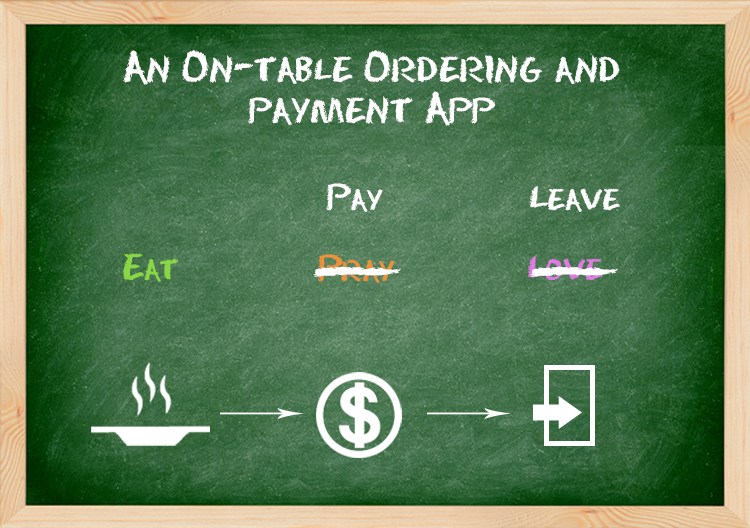
Waiting can be frustrating, whether it is order taking or billing. Restaurant staff feel this pressure, looking for the telltale gestures of the client readiness to order or pay. Having an app where clients can go through the e-menu, place an order, and pay afterwards can take off the edge and put everyone in control of their time.
On-table ordering and payment apps feedback useful analytics on menu choices, length of stay, best performing tables. But that’s not all! E-ordering means order details aren’t lost or confused and they line up in the kitchen chronologically. And on-table e-payment can boost restaurant revenue by 14.1%.
According to this TSYS consumer payment study, for dine-in restaurants, 68% of the respondents chose to use a credit or debit card, while only 18% of respondents prefer cash. Cash-only restaurants miss out on ample opportunities.
Develop an on-table order-and-payment app with the functionality below.
AN ON-TABLE ORDERING AND PAYMENT APP FUNCTIONALITY |
|
|---|---|
| Menu | Loyalty programs |
| Order form | Bill split |
| Order details | Pay at the table or counter |
| Re-ordering | Mobile wallet integration |
| Order ahead | Automatic tipping & tip adding |
| Delivery | Email/print receipts |
An online order and delivery app like Postmates and DoorDash
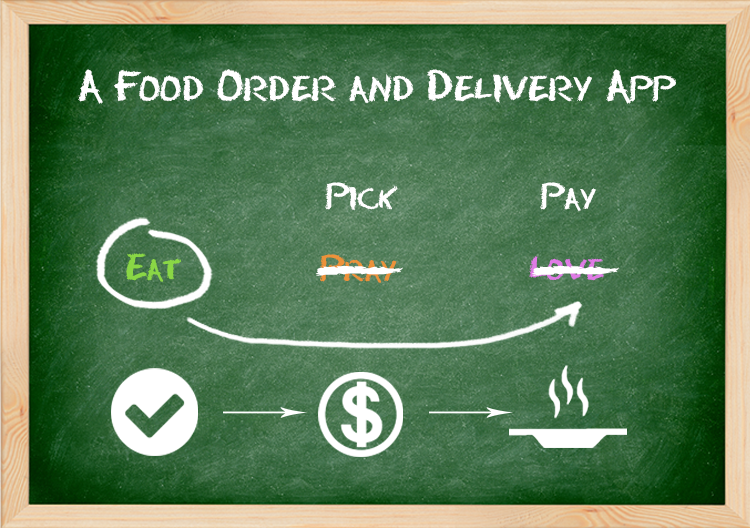
In our recent post about the delivery app development like Postmates, we explained the business model of food order-and-delivery apps. Gig-economy style apps like Postmates serve as marketplaces to unite various groups: customers (placing orders), eateries or stores (providing food), and couriers (delivering the orders). The app embraces the restaurant search, order placement, payment, tracking, and rating. And it’s not long before we’ll see new features like predictive ordering and drone delivery as part of the UI. To make the entire process work smoothly, it needs to focus on smart logistics algorithms.
The core functionality to make a delivery app will comprise these features.
AN ORDER AND DELIVERY APP FUNCTIONALITY |
|
|---|---|
| User profile | Order details/history |
| Restaurant search | Booking an order |
| Restaurant listings | Delivery status |
| Menu | Notifications |
| Card registration | Ratings |
| Automatic payment | Real-time chat |
A home restaurant app for adventurous eaters

A home restaurant app is a platform to bring together foodies (adventurous eaters) and passionate home cooks willing to occasionally open doors to friends, acquaintances, or perfect strangers (mostly tourists) and share unique culinary experiences. Experience economy is transforming our idea of a vacation home rent (Airbnb), rideshare (Uber), and eating out (EatWith). Life’s an adventure. And since we can make informed decisions, who would settle for the second best with culinary experiences?
Does the best always cost? And is the best always branded? These are good questions and worthy enough if you’re looking to build a restaurant app that stands out.
Meet FlippDish, our idea of a home restaurant app.
The USP? Home restaurant recipes are unique. A family heirloom cooked with passion, what can taste more heavenly? And the app? That’s an awesome opportunity for a prodigy chef to gain recognition long before opening their own brick-and-mortar or for a seasoned chef to test a new concept. And for the gourmets, sharing a meal almost has a sacred meaning, turning strangers into lifelong friends.
The idea of having a home from home to share food experience at is taking off worldwide. San Francisco startups Feastly and EatWith are tinkering with the promising niche concept. And so can you! But let’s dig into the app’s functionality.
A HOME RESTAURANT APP FUNCTIONALITY |
|
|---|---|
| Easy dish search | Social buttons integration |
| Filters / food categories | Calendar |
| Venue listings and map view | ‘Booking a venue’ button |
| Venue information page | Booking form / details |
| Menu screen | Card registration |
| Photo / video gallery | Automatic payment |
| Photo / video upload | Notifications |
| Reviews & Ratings | Booking receipt |
| User profile | Real-time chat |
| Activity stream | In-app calling |
| Special offers & events | Recommendation engine |
What APIs to integrate in a restaurant app
Why do restaurant apps need API integration in the first place? Simply put, with all the complexity of today’s business relations, open APIs create shortcuts into interoperability. Any app developer will agree, keeping data in sync throughout is crucial. Just like the Lyft app uses APIs to integrate with technologies like Google Maps for navigation or Twilio for rider text alerts, among many others, your restaurant app needs different APIs to create a seamless end-to-end user experience. So which features to enhance and what APIs to choose?
- POS system integration. Deliveroo API allows you to connect your POS system with the application. Although newer POS systems have APIs as part of the system, large, legacy restaurant systems may connect via Omnivore, Chowly, and SimplicityPOS.
- Reviews. To gather reviews about your restaurant, use TripAdvisor Content API (tourist reviews) or Expert Review API (expert reviews). Starting reviews is usually hard. By pulling the existent data, you’ll be able to create the network effect sooner.
- Suggestions and recommendations. Qloo API gives access to AI-generated tips. These are important as UGC keeps customer acquisition costs low.
- Reservation system. Resy API can be used to provide customers with the reservation system. Moreover, it includes information on floor plans and allows user to choose the exact table they want to book.
- Payment gateway. For payment integration, use Android Pay API, Apple Pay API, API by PayPal, Stripe, or Braintree.
- Location-based functionality. For location-based functionality (navigation, recommendation, etc.), use Google’s Maps and Places. If you are developing an app for iOS, you will need CoreLocation framework and for Android, you will need Google’s Location API to select a given geographical region.
- Delivery tracking. To streamline the shipping process and track orders, use the Shippo API.
- Feature launch. You may want more control of your new feature releases, especially with multiple user groups. Launch to the select few – the so-called soft launch – with LaunchDarkly.
- Restaurant information. For restaurant data, use Foursquare or Zomato APIs. Those lessen the efforts from the app owners’ side, as all the information and details of the restaurants in concern, can be directly drawn from these aggregators.
APIs provide a flexible solution to enable an incredibly dynamic business. For more ideas on restaurant APIs check this site.
What’s the cost of a restaurant app development
Despite the long list of proven benefits, a shocking 95% of restaurants still don’t have their own apps. Could they still be under the impression that mobile app development is a cost-prohibitive endeavor for independent enterprises? In fact, restaurant app development services have never been more affordable. Still, money talk is a regular discussion opener for a new software project.
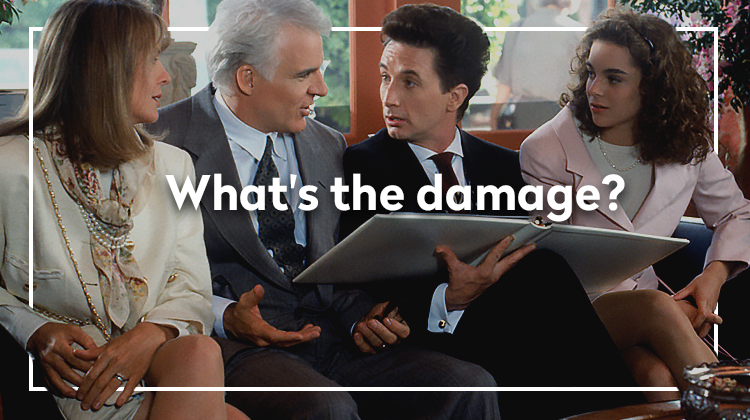
So let’s talk money!
Of course, you can’t just expect the fixed sum whenever you ask how much for a restaurant app, simply because you aren’t buying off-the-shelf. Instead, consider these:
- A restaurant app is a database app, which involves a great deal of backend development.
- Different users will require different functionality, so in fact, you end up with two or three app variants (for diners, restaurant staff, restaurant management, delivery people, etc.).
- It serves dual (or multiple) purposes: search and discovery, ordering, delivery, payment. The more complexity, the harder (and longer) to build, the more robust architecture you need from the start.
- The factors determining the cost are the app’s size, interface, platform(s), developers, 3rd-party APIs and SDKs.
So the estimates most often are a wild guess before you dig into real product’s requirements. The only fact so far is that the hourly rates of Ukrainian developers are $35-50. But if you need a ballpark for your awesome restaurant app, we’re here to help you estimate the cost of development.
Wrapping up
Our eating habits evolve. And it’s not cut in stone where food tech is going to take us next. But having a customer at your fingertips is a no-joke while a phone is something we start our day to and carry with us at all times. The next-gen customer is tech-savvy, connected, and has high expectations. Why not use this opportunity to cultivate a new eating style through your ingenious restaurant app ideas?
How much does it cost to build a restaurant app with CodeTiburon?

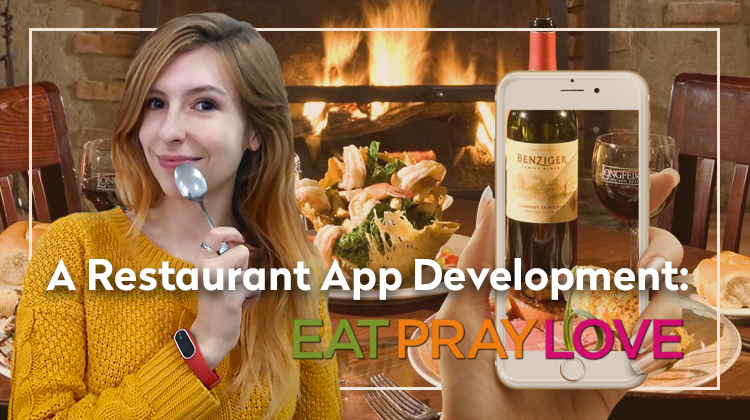
Online food delivery app is vital to order online food easily and makes the process easy for customers. Food delivery apps grow the restaurant business and increase their sales.
Totally! A great observation I’d go along with, Niharika. Thanks for your comment!
Great article. Since Covid-19, several restaurants are seeking for restaurant app development to break the chain and to stay away from disease attack.